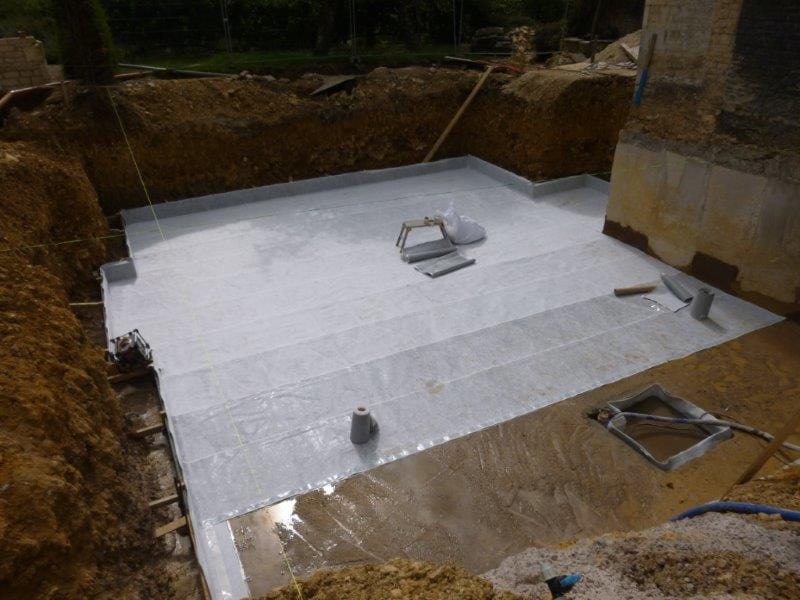Water-proofing is a critical aspect of preserving any dwelling or property, yet it often goes overlooked until concerns arise. As moisture invades buildings, it can cause high repairs, compromised safety, and even issues due to fungus and mildew growth. Comprehending the value of waterproofing is crucial for every real estate owner, as it not only safeguards against immediate damage but also improves the overall lifespan and worth of a property.
This resource delves into the fundamentals behind water-proofing, shedding light on why it is essential, the different methods available, and how successful waterproofing can protect you thousands in possible repairs. Moreover, we will dispel frequent myths surrounding water-proofing techniques and equip you with the insight to spot indicators that your place may require attention. Whether you are planning to waterproof your lower level, ceiling, or bathroom, comprehending the basics of water-proofing will empower you to have educated decisions for your living space.
The Importance of Moisture Protection in Homes and Structures
Moisture protection is a vital aspect of maintaining the structural integrity and durability of homes and structures. It acts as a barrier against water infiltration, which can lead to a range of issues, including structural damage, the growth of mold, and health issues. Without proper waterproofing, real estate are at risk to water-related damage that can compromise not only the physical structure but also the quality of indoor air. This makes waterproofing imperative for ensuring a secure and healthy home environment.
In addition to protecting against damage from water, waterproofing can yield significant savings in costs over the long term. Repairing water damage often involves substantial work, from structural repairs to mold remediation, which can be financially burdensome. By actively website here , property owners and building managers can avoid these issues from arising, effectively saving a significant amount of money in potential repairs. This proactive step is an investment that yields returns in the future, reinforcing the importance of addressing waterproofing requirements promptly.
Furthermore, proper waterproofing plays a role in energy conservation within a building. By keeping water out, buildings can maintain consistent temperatures, reducing the need for high heating or cooling. This not only lowers utility bills but also improves overall comfort levels. As energy efficiency becomes increasingly important, the role of waterproofing in sustainable construction is undeniable, making it a critical factor for both new and existing structures.
Fundamental Moisture-Proofing Techniques and Solutions
One of the most efficient methods for waterproofing is the use of protection systems, which create a shield against moisture intrusion. These systems can include specialized membranes applied to both inside and exterior surfaces, such as walls and foundations. By sealing off potential access points, these protections prevent moisture from penetrating the building, reducing the risk of moisture damage significantly. Choosing the appropriate type of membrane for your unique needs is essential, as different materials offer varying levels of strength and resistance.
Another essential strategy is proper water management management. Installing a well-designed drainage system around your premises can redirect moisture away from exposed areas, such as basements and bases. This can include drainage systems, water pumps, and drain pipes that are directed away from the structure. Adequate drainage not only minimizes water accumulation but also enhances the longevity of waterproofing systems and protects your home from the destructive effects of flooding and dampness.
In addition to barriers and drainage, the application of moisture-proof coatings is vital for enhancing the protection of surfaces prone to water exposure. These coatings can be used on roofs, partitions, and decks to create a moisture-proof layer that resists moisture and prevents mold development. Selecting the right coating is important to ensure it endures environmental conditions, thus prolonging the lifespan of your waterproofing solutions. Routine maintenance and inspections are also important to ensure that these defensive measures remain functional over the years.
Cost Repercussions of Ignoring Waterproofing
Ignoring waterproofing can lead to substantial financial repercussions for homeowners and building managers. Water damage can threaten structural integrity, necessitating costly repairs or even renovations. A single leak can transform into widespread damage, affecting walls, floors, and foundations. This not only raises repair costs but can also lead to a decline in property value, making any future transaction more difficult.

In addition to structural repairs, the costs related to mold and mildew removal can add up quickly. Mold flourishes in damp conditions, leading to possible health risks and requiring professional remediation services. The longer the moisture issue persists, the more severe the damage becomes, ultimately costing much more than initial waterproofing measures would have.
Moreover, disregarding waterproofing can result in increased energy bills. Damp building materials can lead to higher energy loss, forcing HVAC systems to exert more to maintain comfortable temperatures. By opting for waterproofing solutions initially, property owners not only save money on repairs but also enjoy sustained savings on energy costs, enhancing overall building efficiency.
